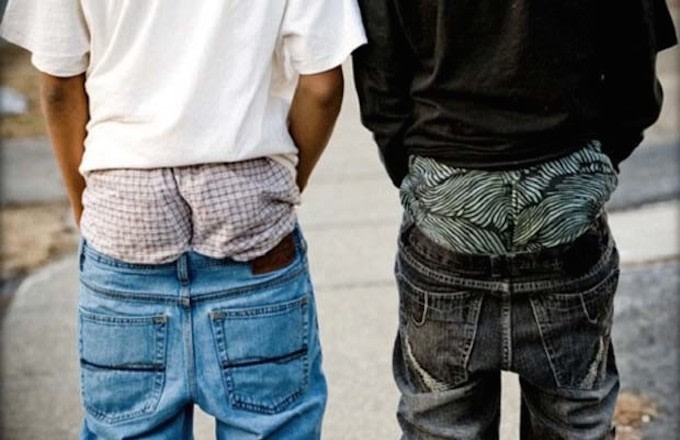My wife mentioned it to me on the way home from church, “It concerns me how some women dress today, sometimes even in church.”
I knew exactly what she meant. During the children’s story, a robust but scantily dressed woman bent over to emphasize part of the story, and ended up emphasizing something else. I don’t think the woman knew that she had ‘flashed’ the entire right side of the church. Or maybe she just didn’t care.
“When you dress carelessly like that,” my wife added, “you take the focus off God and put it on yourself. You’re undermining the whole reason we’re there.”
I agreed. The only Adventist Female Upper Body Distinction (AFUBD) that I care to see is my wife’s, and I certainly don’t need to see that in church. No one else does either.
Jennifer LeClaire suggests that this issue of revealing clothing in church is troubling:
Some women—and I am talking about so-called "mature believers," not lost souls or baby Christians—come into God’s sanctuary on Sunday morning wearing clothes you might rather expect to see them wearing at a dance club on Saturday night. Their blouses cling to their bodies, their necklines dip so low and stretch so wide that they reveal cleavage, and the slits up the sides of their skirts offer more than an innocent glimpse of their thighs. Again, I’m not talking about sinners seeking God or new believers who plain don’t know better. I’m talking about those who claim to be "born-again, baptized members of the church!
Other Christian women think that such a push toward modesty is rooted in shaming the female members of a congregation. They claim that using such slogans as “modest is hottest” makes women feel as if they are the root cause of temptation, rather than teaching them how to view themselves as beautifully created by God. A few years ago, Sharon Miller suggested how to tackle the problem:
How do we discuss modesty in a manner that accepts the female body without objectifying women, and still exhorts women to purity? The first solution is to dispense with body-shaming language. Shame is great at behavior modification, even when the shaming is not overt. But shame-based language is not the rhetoric of Jesus. It is the rhetoric of his Enemy.
Finally, language about modesty should focus not on hiding the female body but on understanding the body's created role. Immodesty is not the improper exposure of the body per se, but the improper orientation of the body. Men and women are urged to pursue a modesty by which our glory is minimized and God's is maximized. The body, the spirit and the mind all have a created role that is inherently God-centered. When we make ourselves central instead of God, we display the height of immodesty.
It is true that we—as a church—can do a better job teaching a “theology” of the body that isn’t rooted merely in shame. We are all designed by God and wonderfully made (Psalm 139:14). Everything God gave men & women was created “very good” (Genesis 1:31). But that was before sin, and it is the nature of sin to corrupt. The body (vessel) can only honor God if it is “possessed in sanctification and honor” (1 Thessalonians 4:4).
Paul instructed Timothy that women should “adorn themselves in modest apparel, with propriety and moderation” (1 Tim. 2:9), and he told the church at Corinth that “our unpresentable parts have greater modesty” (1 Cor. 12:23).
Regardless of how hot it is outside or how busy we are, there’s no justification for Christian women to come to church wearing clothes that cause some men to pay more attention to the things of the flesh than the things of the Spirit. And there’s no excuse for men allowing a wandering eye to wander all over the landscape.
At the same time, our fallen nature has impacted the way we (especially men) see women’s bodies. The flesh nature gets in the way of what was once a perfect posture of purity toward each other. While we’re no longer slaves to our sin nature (Romans 6:6), that doesn’t mean our minds don't harbor impurity at times (Romans 13:14). Both men and women must live and dress in ways that humbly honors God. If they want to please Him, that is (1 Thessalonians 4:1).
God will hold two people accountable on That Day:
Those who entice
Those who lust
Both of them are in trouble, according to Scripture.
Bikinis
There was a TED talk going around a few years ago, where former model, Jessica Rey, was sharing her thoughts about wearing bikinis and the evolution of swimwear.
In her video, she cited a famous study in which images of women in bikinis were shown to men. Brain scans revealed that the men’s brains would light up seeing a scantily clad woman in the SAME EXACT area of the brain that would light up when they saw a tool. Seriously. Like, a drill, or a cool hammer. There was NO emotional reaction or attachment observed in the brain, and researchers were able to conclude that women in bikinis actually caused men to react in a way that the women were simply seen as objects.
Conclusion: what you wear has a direct impact on how people see you.
Which leads me to the next question, what, then, is the purpose of wearing a bikini?
The same girl/woman would be horrified to be caught outside in her underwear, in spite of the fact that a bikini is just colored underwear that costs three times the price.
Is it to get attention from the opposite sex? You will. And that kind of attention has nothing to do with true affection, and everything to do with taking something from you that you’ll never get back.
Modesty
It’s important to challenge ourselves on modesty because there’s a trend going around in which encouraging modesty has been slammed as “body-shaming.” As though covering up our body parts means we’re ashamed of them. “Don’t be ashamed”, says culture. “Flaunt it!”
Right.
Full speed ahead.
I guess it doesn’t matter if you drive off the cliffs of immorality.
However, in spite of a crazed world that is obsessed with the wrong use of sex, not all women are hussies, not all men are perverts. Many Christians take the Word of God seriously on modesty, and inspire others without even knowing it.
My dear wife is an example of Christian modesty, and has often inspired other to be more feminine and more modest. In Christ, we are sons and daughters of God with something valuable to say to our world. Are we dressing as if we believe that? Everybody knew where Jezebel stood. Where do you stand?
But the question still hangs in the air, doesn't it? How do you teach Christian girls (or boys) about modesty? How do you inspire girls to not walk around in chiffon spray paint? How do you motivate young men to not waddle around in droopy drawers like drunken penguins (DDDP) — a sartorial maneuver that makes them look like they are pooping themselves while they walk?
And more importantly, how does Jesus want us to appear?
He wants men and women to be modest in their dress and not wear that which pertains to the opposite sex (Deuteronomy 22:5).
He wants us to be approachable and friendly, so that we can be the "aroma of Christ" and have opportunities to show Christ's love to others. That leads us to not dress to be sexually alluring, and it can also lead to not dressing to look sloppy or lazy, too. It’s about self-respect—and respect for others.
Somewhere between wearing a burlap sack or ‘spray paint’ to church, there is a middle ground of modesty that God smiles upon.
It’s not our responsibility to buy a woman new clothes just because she’s determined to wear seductive garb to church. But it is our responsibility to speak the truth in love to those who may not know better and to lead by example. In too many ways—including sometimes our own wardrobe—Christians have conformed to the world. Paul warned us not to “be conformed to this world, but be transformed by the renewing of your mind, that you may prove what is that good and acceptable and perfect will of God (Rom. 12:2).
Are we dressing to show that we respect ourselves? Or are we dressing to please others?
Then finally, "Does the way that I look right now give the impression that I belong to Christ?" It can.
And it should.
****



